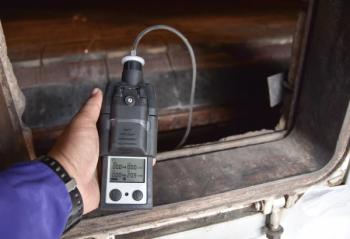
New Microplastic-Detecting System Created Using Microscopy and Raman Spectroscopy
Chinese scientists recently combined confocal microscopy and an echelle-grating spatial-heterodyne Raman spectrometer (CM-ESHRS) to create a new system for detecting microplastics.
A group of scientists mainly based in the Chinese Academy of Sciences in Changchun, China recently combined confocal microscopy and an echelle-grating spatial-heterodyne Raman spectrometer (CM-ESHRS) to create a new system for detecting microplastics. Their research and experimental data were published in Spectrochimica Acta Part A: Molecular and Biomolecular Spectroscopy (1).
Microplastics consist of plastic fragments that are resistant to biodegradation and smaller than 5 mm. They are formed by the degradation of larger plastic fragments via physical, chemical, and biological effects. As a globalized pollutant, microplastics are becoming a large concern, since they have been detected in oceans, terrestrial environments, and living organisms, posing significant risks to the survival of terrestrial and marine life. This has led to many techniques being used for microplastics detection, each of which have advantages and disadvantages. Namely, conventional detection techniques usually retain weak signals and have low signal-to-noise ratios (S/N).
One popular approach for microplastics detection is Raman spectroscopy, which has proven effective due to its ability to perform in real-time and because of its non-destructive nature. Specifically, Raman micro-spectroscopy is considered the gold standard according to the scientists in this study; this stems from its ability to observe the morphological characteristics of tiny particles via microscopic imaging, in addition to enabling analysis of the chemical compositions of individual microplastic particles via Raman spectroscopy.
For this experiment, the scientists presented a new technique for rapidly and accurately detecting the chemical composition of microplastics. It combines confocal microscopy and an echelle-grating spatial-heterodyne Raman spectrometer (CM-ESHRS), which is said to enhance signal intensities and improve S/N using a confocal-microscopy Raman module. Along with these techniques, the scientists increased optical throughput by placing right-angle prisms in the optical paths of the two interference arms, with the prisms having specific refractive indices and top angles for field-widening.
The combination of confocal microscopy and the echelle grating enabled high optical throughput, high S/N, high spectral resolution, with a wide spectral detection band.Following spectral calibration, the spectral resolution approached 0.67 cm−1, moreover, the spectral detection range for a single order was 1372.16 cm−1. Altogether, nineteen microplastics were characterized, including polyamide, polypropylene, and polymethylmethacrylate, with some of the microplastics exhibiting strong fluorescence and weak signals. The chemical compositions were accurately identified, and the Raman spectra were subsequently categorized and analyzed. Compared to commercial dispersive spectrometers, CM-ESHRS proved to have a higher optical throughput.
From there, the scientists used this system to examine microplastics in various circumstances, from having different particle sizes, to being mixed in flour, and being made of different materials under mixed conditions. All these scenarios yielded complete spectral information that the researchers could understand. Altogether, the scientists detected ten kinds of common microplastics using this CM-ESHRS system, with them being able to analyze their Raman characteristic peaks in detail while categorizing and summarizing the main vibration types of each spectral band. This greatly expanded their knowledge on Raman spectral information for microplastics, which can provide a reference for subsequent experiments. Though there is more research to be done, these findings led the scientists to conclude that CM-ESHRS has the potential for detecting microplastics and helping society to regulate these substances in the environment.
Reference
(1) Li, F.; Song, N.; Li, X.; et al. Detection of Microplastics via a Confocal-Microscope Spatial-Heterodyne Raman Spectrometer with Echelle Gratings. Spectrochim. Acta Part A: Mol. Biomol. Spectrosc. 2024, 313, 124099. DOI:
Newsletter
Get essential updates on the latest spectroscopy technologies, regulatory standards, and best practices—subscribe today to Spectroscopy.





